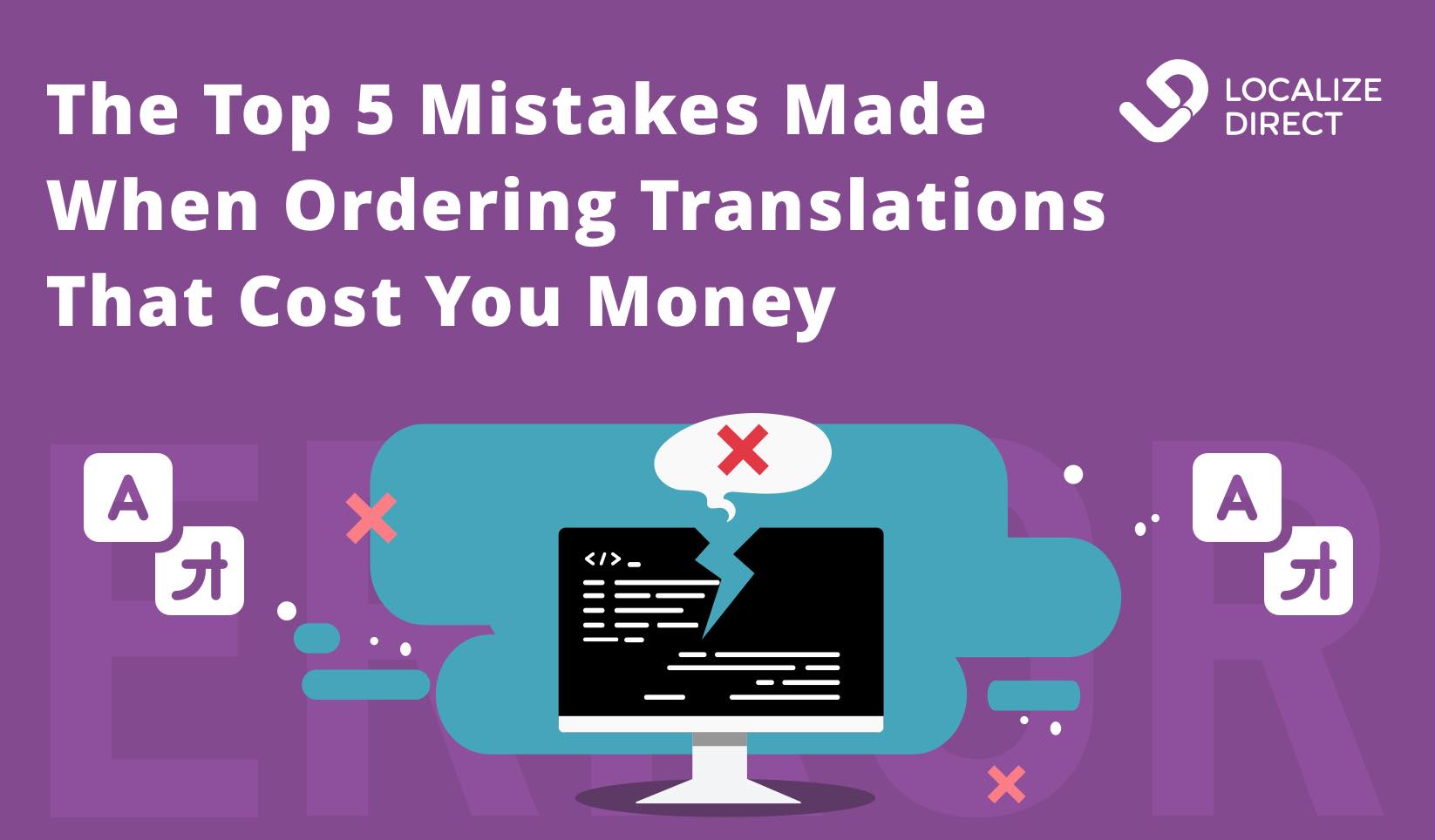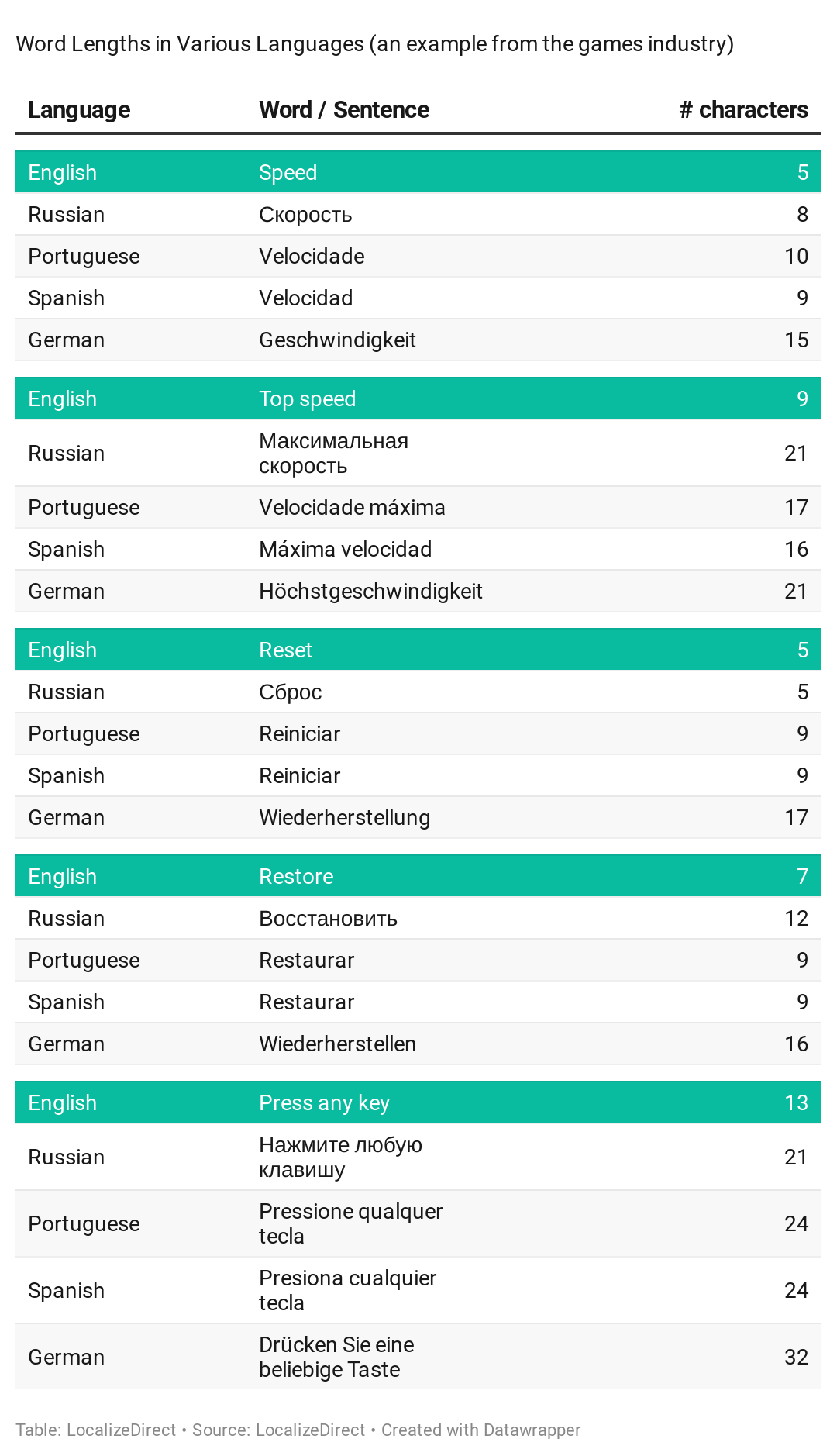How to set yourself up for a successful game localization project
Getting ready to localize your game? Learn what to consider before starting a localization project, from setting up your file to creating a style guide.

I’ve been working with localization for almost a decade now, and oh boy, I’ve seen some troublesome projects in my time. I’m hoping that this list will serve to better inform those embarking on the loc text request phase of their development. I also hope that those handling loc project management will nod and tell me “oh man, I know what you mean”.
So let’s crack on, I could perhaps suggest that 20% of localization projects create 80% of the hassle. There are lots of great, well planned and executed loc packages, those will receive my utter admiration! However there are those that require endless back and forth communication and the ire of a constant flow of translator complaints. Perhaps based on lack of information or untimely responses from development.
So, here’s a list of the five biggest issues we have faced and continue to face on many occasions. Share this far and wide people, share it with developers, share it with project managers, share it with friends. Let’s get some common sense in place!
Not proofreading your source text is a big mistake that can regularly delay translation delivery. The wordier the text is, the more important it is that it’s reviewed properly (and thoroughly). Trust me, proofreading your text will help to keep terms consistent, it eliminates typos and copy-and-paste issues and improves readability. You should remove placeholder strings that aren’t for translation as this will speed things up and save you money and time!
Was your source text written by a non-native speaker of that language? Then it is even more important that it is proofread by a native speaker. Professional proofreaders will make sure your text is clear and fluid. And remember: it’s rare that good quality translations will come from poorly written source text.
Translators usually comment on typos, grammar mistakes and other issues present in the source text. And understood, it is helpful. However it should not replace professional proofreading. Keep in mind that adding notes and posting queries about issues found in the source text takes up valuable translation time.
So my advice here is to invest in your source text. It will be very helpful and save you time if you go on to add more languages later on. You might not be planning that expansion right now, but it would be nice if you could do it with the minimum of fuss (and back and forth reporting of issues).
It is always best to provide the source text as a whole, ideally in full sentences. However, we do understand that’s not how it always works, you may need to feature variables too. Well, we have the solution to context problems: add a context description field to your strings.
Really!
Doing that will save you a lot of time having to answer translator queries. Remember, what seems obvious to you may not be that clear to translators. All they want is to provide the best translation possible for your game. So they need to know all possibilities that will go in those variables positions, they also need to know the context for these variables. Trust me, a small note informing whether a single word is to be translated as a verb or a noun will result in translator joy.
Pro tip: the shorter a string is, the more likely it is that the translator will need more information about how it will be used.
So think outside of your own language box and help us by being proactive. You will encounter fewer questions and experience faster turnaround times!
Well, translating random dialogue sentences without seeing the full conversation in context can result in nonsensical translations. The nightmare here is that you may only find out about it once the game is live and the community is posting outraged reviews about your game. Or in the best case scenario, just making fun of it. But for both ¡no bueno!
Dialogue is a major part of some games, and it is important that translations reflect them naturally. For that to happen, we should keep in mind that languages can be extremely different from each other. For instance Spanish or Japanese have distinct ways of addressing different people.
There are distinct nuances in speech and dialogue. There may be formal and informal addressing in speech depending on the character’s age and social relation. There may be the use of different words depending on the gender and age. Is the speaker talking to one person or to more than one? Are they all male, female, or mixed? This plays an important role in some languages. And remember, these are just a few examples…
Don’t think twice. Always provide dialogue information from the very beginning. Not in the middle, and certainly not at the end of the localization process. You don’t want your game dialogue to turn into a joke, do you? Unless of course it’s meant to sound crazy!
Unless your game has no text at all, never forget that readability is essential. Game titles, store text and keywords have certain character limits depending on the platform, those are easy-peezy to deal with. Now if your game has non-scalable UI or voice over subtitles, or when dialogue texts need to maintain a certain pace, that will probably mean that text should be within a specific character limit. And for that, yes, we see a potential problem.
Taking English as an example of source text, which is the most common source from my experience. It is very likely that Chinese, Japanese and Korean translators will provide translations shorter than source length. Good news eh?
Well, unfortunately, this is not the case for many other languages. Russian, Brazilian Portuguese, Spanish and German are regularly classed as “Hard”. They usually end up returning way longer translations than English. Here we have some game examples for you:

French, Italian, Polish, and other languages are also known for the miracle of multiplication. Some can be around 30% longer than English. So, if your game cannot accommodate a greater number of characters than the source text, you better start praying!
There are some ways around this, but be aware, most will not render a natural localization. And that’s what you are looking for, right? Abbreviating, for instance, can be a terrible solution, especially if you target a younger audience. Also, leaving texts in English is not OK. It is a no-no for most – if not all – languages, except for some very specific words that are very well known by gamers, such as Game, OK, Play.
Remember: character limitations can set a limit on gamer understanding, experience, and fun factor. Take that into consideration before requesting localization. The more freedom translators have to work on the text, the more natural your game will be in the localized languages.
It’s true, working in the game localization industry, we often find ourselves managing extremely urgent projects. Once in a while, dealing with rush requests is totally understandable. It can happen to anyone. But hey, once this becomes a rule, it turns the process into an inefficient and rather unhealthy one for anyone involved. Even freelance translators who love games, appreciate time off to spend with their family and friends over the weekend.
We work with linguists that translate up to 2500 words per day. Does that mean that they will translate that number of words from the moment they receive your file? If it is a new project, the answer is most likely No. Translators need some time to familiarize themselves with the game and the style of the text. They check the game assets, do their research and even play the game to gain greater familiarity when builds are available.
For a large project, we always suggest not involving more than three translators, for consistency’s sake. With more than three, the quality of the final translation may suffer. Keep in mind that there are texts that are more complex than others, and of course this has an impact on the daily output of a translator’s work. Also, it isn’t easy to be the most creative under stress. That’s why I believe it is important to point out that super-duper urgent requests with tight deadlines are more likely to render problems in the end.
So here you go: last minute requests will likely work against your game. Proofreading the source text is a worthy use of effort. Adding notes, providing dialogue information, and preparing for languages that are longer than English are invaluable for successful localization. Do that and you will find that the localization process will run far more smoothly. Besides that, everyone involved will be happier at the end!
Rodrigo is lead localization manager at LocalizeDirect. He leads the project management team and approx. 200 translators. If you’ve ever translated your game with us, you’re probably already familiar with him. Follow him on LinkedIn for more loc insights.
Getting ready to localize your game? Learn what to consider before starting a localization project, from setting up your file to creating a style guide.
Some Asian countries are absolute global leaders in the gaming industry: for instance, China, Japan, and South Korea are all in the top 4 by revenue after the US. Other markets (Southeast Asia and the Middle East) are some of the most rapidly growing ones, especially in the sector of mobile gaming.
